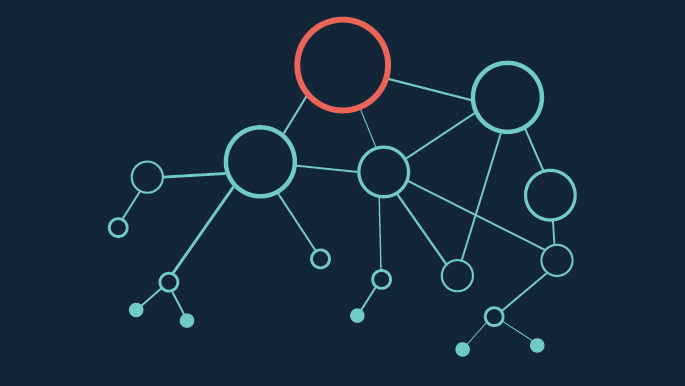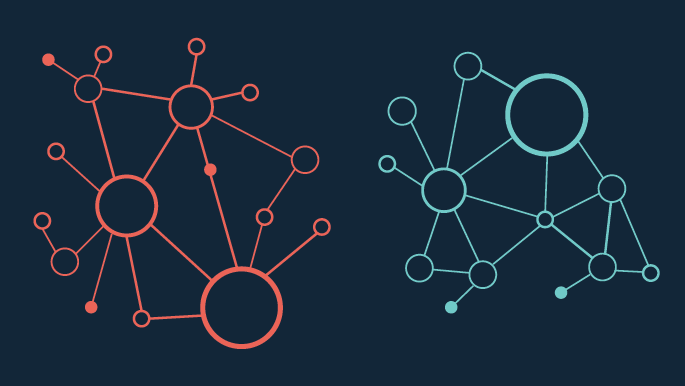It’s what every good company strives for: teamwork. Warwick Business School have found that the evolutionary roots of teamwork stretch all the way back to chimpanzees. Professional teamwork was first researched in the 1920s by Professor Elton Mayo who concluded that people who were made to feel involved or more important did better in the workplace.
UX design is no different. The work of a UX designer touches many different departments and you need to collaborate effectively with all of them to ensure the product is a success. Unfortunately, like good communication, teamwork is often one of the essentials that gets forgotten when people are busy or working remotely.
In this article we look at how a UX designer can leverage teamwork to create mutually beneficial working relationships, inspirational products, and the best possible user experience.

First impressions
Interactions with the rest of the team can be tricky as a new UX designer for various reasons. As a relatively new field, people might not really be sure what UX is, and as such they might not know what you are there to do. Brown bag lunches are a great way of letting people know what your job entails (we’ve created an overview on what a UX designer does).
Talk through the benefits of well thought out UX design, the processes you use, and provide some slides with some examples of work you’ve done previously. You could use your portfolio if it is your first UX position.
The 4mat system where you explain, as simply as possible, the why, what, how and what if is a great way of structuring your slides so that you cater for many different learning styles.
Senior management
The good news is that senior management are taking UX seriously otherwise they wouldn’t have employed you. However, like with the rest of the team, they might not be entirely sure what UX entails.
A common issue is senior management being keen on the visual aspects (i.e. ‘making things pretty’) but be less aware of the benefits of thorough user research and usability testing.
One way to get them on your side is with quantitative data, so start gathering a great set of UX metrics.
All senior people want to know that you are going to help them reach targets and make money. Explain to them how great user research can help them to make informed business decisions. If you don’t have any metrics for the product already, start off with some figures from other sources.
I recommend having a look at the article 13 Impressive Statistics on User Experience for some ideas. For example, espn.com revenues increased by a massive 35% after they incorporated user feedback into their homepage redesign and 88% of online consumers are less likely to return to a site after a bad experience.
It is also important to build up your own set of figures for the product so that the return on UX investment can be measured, and you can show that there is an effective UX strategy in place.
Google’s HEART framework is a great way of measuring the quality of user experience. It incorporates Happiness, Engagement, Adoption, Retention and Task Success. They recommend picking two of the areas to focus on and then building metrics around them.
‘Adoption’ includes new subscriptions created and purchases made and ‘retention’ which includes renewal rates and repeat purchases are usually metrics that senior execs want to see. You can always check what would be most useful for them to see based on the business priorities, and start building a collection of data points to benchmark monthly or quarterly so improvements can be tracked.
Web developers and product team
A UX designer’s main interactions on a day-to-day basis will be with developers and the product team.
Different teams work in different ways so it best to ask for a run down of all processes when you first start and then see where your UX design skills can be added to the mix. Some ideal places to add UX input are:
- Conducting competitor and other industry research to see what other products are already on the market and where the opportunities and threats are.
- Initial user research in the form of surveys, focus groups, etc to check assumptions.
- User testing based on early prototypes to check the product is on the right track.
- Most development teams nowadays work to some sort of Agile methodology. If this is the case, attend sprint planning and sprint review meetings as the voice of the user. Other team members may have different priorities, e.g. getting the project finished quicker so be prepared with business cases about why a certain feature is best for the user.
- Usability testing to check that the product is usable and intuitive.
Be sure to meet with people face-to-face as much as possible, either at morning stand ups or informally in the office to discuss user needs or to go through wireframes.
It can be really nerve-wracking as a new UXer to show off wireframes in formal meetings, so until you feel more confident, it is a good idea to sit amongst the development team so you can grab them, as the technical experts, for quick ad hoc advice. It’s also good to be near the developers so you can answer any questions they have while building features.
Finally remember: it takes time and effort before new processes become the norm. Sometimes it can seem to developers in particular like time wasting or adding unnecessary steps, as many of them are used to starting to build products or features without UX processes in place.
Be patient, keep gently reinforcing the benefits of solid user research (e.g. them not having to do work again) and be friendly even when frustrated- however hard it can be.
Marketing
You might not be living in each other’s’ pockets as much as with other teams, but it is likely you will interact with the marketing team too. They are a really useful team to have on your side, as there are plenty of crossovers between UX and marketing.
Both professions are interested in research and understanding human behaviour, building loyalty, and improving the overall experience – the better the UX, the easier the product will be to market to its audience.
Some potential areas for collaboration include:
- The overall message – the marketer will have a clear idea of what the overall message is and should have documents based on this, e.g. style guides which will be really useful when writing content. Check out this fantastic style guide by Mailchimp if you haven’t seen one before. They are also likely to be one of the best people to proofread system content and make sure you get the brand voice right.
- Personas – It is likely that there may already be marketing personas set up and although they will focus heavily on the person buying the product, there may be one or two which can be adapted for UX purposes. Once UX personas have been established, it may also be worth working with marketing to get all the personas publicised across the whole company so that everyone is thinking with the user in mind. Try sticking up posters or introducing the personas one-by-one in a weekly post on the company intranet.
- Research and analytics – get together and work out the different areas you are researching and where knowledge sharing can take place. Whilst completing user research you may have a lot of qualitative data around user behaviour which the marketer can benefit from. They also will probably have a whole wealth of analytics set up which can feed into your UX analytics.
Summary
UX designers can’t operate in a vacuum—everyone needs to work together towards the same goal.
As a relatively new practice which a lot of companies are only just implementing, you may find yourself needing to be a UX champion, responsible for embedding UX as part of the company culture and convincing different teams to make decisions with the user in mind.
Here are three top tips for successful teamwork:
- Work out how you can benefit from other departments, e.g knowledge sharing and ask them how you can help them!
- Experiment with the best way to implement UX processes until you find a structure that works for you. It is unlikely that you’ll get it right first time. Review regularly and be prepared to have some have some conflict before getting it right. Bruce Tuckman’s model of Forming, Storming, Norming and Performing is a great way of understanding the lifecycle of teamwork.
- Get everyone to agree on the best method of communication- there are so many options available nowadays, e.g. Slack, Trello, Yammer. It’s easy to get bogged down in too many emails and it is really easy to misinterpret someone’s tone, so try and meet face-to-face as much as possible, or if that’s not possible, set up a video call!
Want to learn more about UX design and teamwork? Check out these articles:




